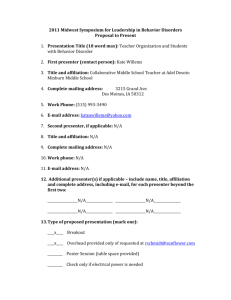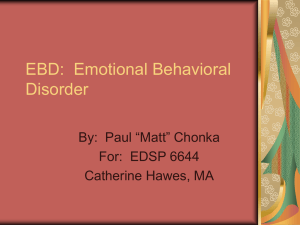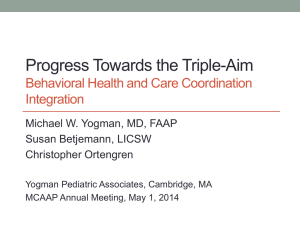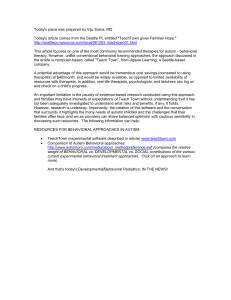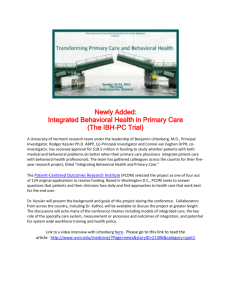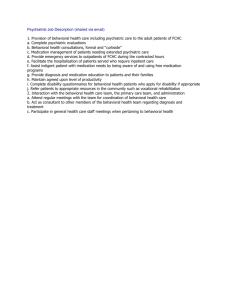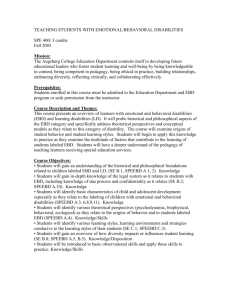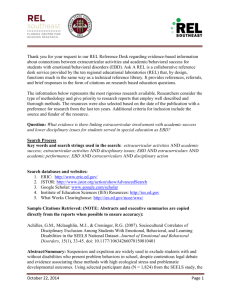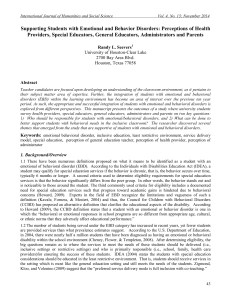EBD- Emotional Behavioral Disability
advertisement
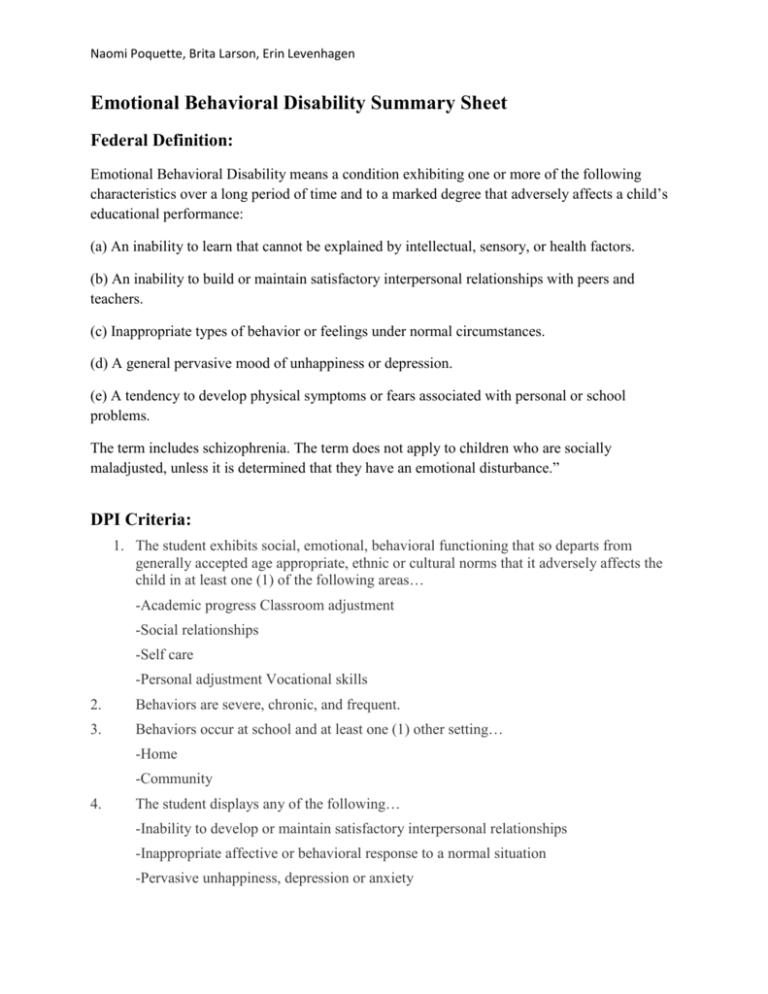
Naomi Poquette, Brita Larson, Erin Levenhagen Emotional Behavioral Disability Summary Sheet Federal Definition: Emotional Behavioral Disability means a condition exhibiting one or more of the following characteristics over a long period of time and to a marked degree that adversely affects a child’s educational performance: (a) An inability to learn that cannot be explained by intellectual, sensory, or health factors. (b) An inability to build or maintain satisfactory interpersonal relationships with peers and teachers. (c) Inappropriate types of behavior or feelings under normal circumstances. (d) A general pervasive mood of unhappiness or depression. (e) A tendency to develop physical symptoms or fears associated with personal or school problems. The term includes schizophrenia. The term does not apply to children who are socially maladjusted, unless it is determined that they have an emotional disturbance.” DPI Criteria: 1. The student exhibits social, emotional, behavioral functioning that so departs from generally accepted age appropriate, ethnic or cultural norms that it adversely affects the child in at least one (1) of the following areas… -Academic progress Classroom adjustment -Social relationships -Self care -Personal adjustment Vocational skills 2. Behaviors are severe, chronic, and frequent. 3. Behaviors occur at school and at least one (1) other setting… -Home -Community 4. The student displays any of the following… -Inability to develop or maintain satisfactory interpersonal relationships -Inappropriate affective or behavioral response to a normal situation -Pervasive unhappiness, depression or anxiety Naomi Poquette, Brita Larson, Erin Levenhagen -Physical symptoms, pains or fears associated with personal or school problems -Inability to learn that cannot be explained by intellectual, sensory or health factors -Extreme withdrawal from social interaction -Extreme aggressiveness for long periods of time -Other inappropriate behaviors that are so different from children of similar age, ability, educational experiences and opportunities that the child or other children in a regular or special education program are negatively affected Prevalence: The prevalence of EBD in Wisconsin is 1.6%. It is the 4th largest disability category under the Individuals with Disabilities Education Act. Far more males than females are diagnosed. This could be due to the observance of behaviors seen to be more disturbing in boys compared to the same behavior in girls. Characteristics: Disrupts classroom activities Preoccupied Does not follow or appear to care about classroom rules Poor concentration, distractible Resistance to change and transitions in routines May demonstrate aggressive behavior Low self esteem Difficulty working in groups Demonstrate self-injurious behavior Cannot apply social rules related to others personal space and belongings Often manipulative of situations Lack of social skills and appropriateness Trouble establishing and maintaining peer and adult relationships Low to average intellectual ability Problematic Classroom Situations: high stress environment with lots of noise and movement unclear and overwhelming directions given unrealistic expectations given that student is unable to meet social rejection/ isolation pressure of time forced group work Naomi Poquette, Brita Larson, Erin Levenhagen Teacher Accommodations: -Establish a quiet "cool-off" area. -Provide and teach opportunities for the student to use self-control/ self-monitoring techniques to control behavior. -Teach self-talk to relieve stress and anxiety. -Supply relaxing times within the class. -Use highly stimulating material when presenting something to the class. -Specialized technology -Develop and use behavior contracts Above all treat them as a student, not someone who doesn't deserve "normal" learning environments. Teaching strategies for these students should be based on changing the behavior itself. The system is often centered on discouraging the unwanted behavior and rewarding/encouraging the desired behavior. 1. Specifically identify the behavior which needs to be changed. 2. Create a baseline of the observed behavior. 3. Closely examine the information in the baseline and evaluate what has been observed and documented 4. Develop short and long term goals for the student. In the plan create a reward system to be used. Such as: give student a check mark for every 15 minutes behavior is appropriate. When the student receives 8 checks they may have 10 minutes of computer time. 5. Reevaluate the plan for effectiveness. Has the behavior reduced occurrence in a variety of settings? 6. Make modifications in the behavior plan to reinforce the desired outcome. A behavior modification chart is a widely accepted tool to help a child visually understand the key behavior expectations and track their progress. Useful Resources: Emotional and Behavioral Disorders. Jennio. School Psychology. http://school-psychology.org/emotional-and-behavioral-disorders This article provides a brief overview of Emotional/ behavioral disorders. It covers the definition, prevalence, intervention methods, and characteristics of Emotional/ Behavioral disorders. It would be a great place to start for those that are not very familiar with EBD. Culotta, V., Davis, M., Levine, E., & Rice, E. (2010) School Success for Kids with Emotional and Behavioral Disorders. Naomi Poquette, Brita Larson, Erin Levenhagen School Success for Kids with Emotional and Behavioral Disorders gives possible strategies for parents and teachers of children with Emotional and Behavioral Disorders. It discusses strategies to help children monitor and control their emotional outbursts, overcome the obstacles that EBD presents, and be successful in school. Falk, K. B., Lane, K. L., & Wehby, J. H. (2003). Journal of Emotional and Behavioral Disorders. Academic Instruction for Students with Emotional and Behavioral Disorders, Volume 11, No. 4. Retrieved from http://crins08lerberg.wmwikis.net/file/view/Wehby+et+al.pdf/49739543/Wehby%20et%20al.pdf This article focuses on Emotional/ Behavioral Disorders and academics. Specifically, why there has been limited focus on on the academic needs of EBD students in the classroom.

